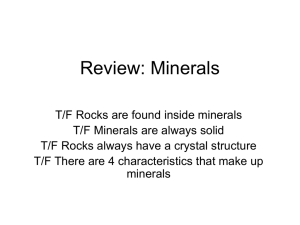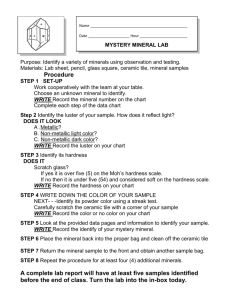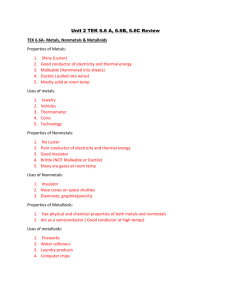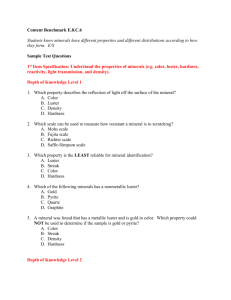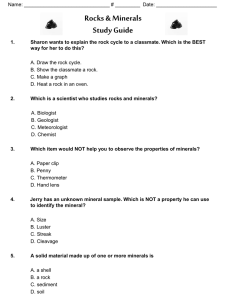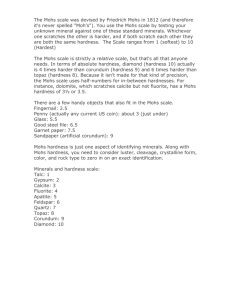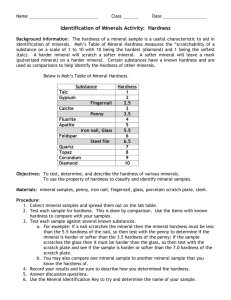Mineral Review Worksheet: Properties & Identification
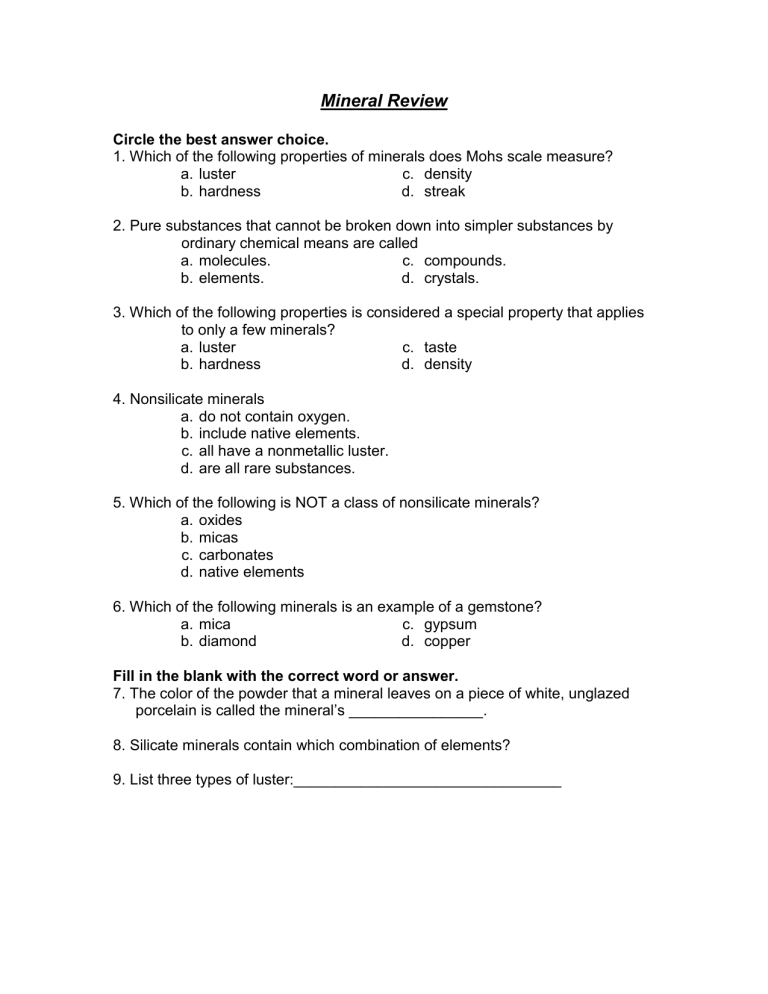
Mineral Review
Circle the best answer choice.
1. Which of the following properties of minerals does Mohs scale measure?
a. luster c. density
b. hardness d. streak
2. Pure substances that cannot be broken down into simpler substances by ordinary chemical means are called
a. molecules. c. compounds.
b. elements. d. crystals.
3. Which of the following properties is considered a special property that applies to only a few minerals?
a. luster
b. hardness c. taste d. density
4. Nonsilicate minerals
a. do not contain oxygen.
b. include native elements.
c. all have a nonmetallic luster.
d. are all rare substances.
5. Which of the following is NOT a class of nonsilicate minerals?
a. oxides
b. micas
c. carbonates
d. native elements
6. Which of the following minerals is an example of a gemstone? c. gypsum d. copper
a. mica
b. diamond
Fill in the blank with the correct word or answer.
7. The color of the powder that a mineral leaves on a piece of white, unglazed porcelain is called the mineral’s ________________.
8. Silicate minerals contain which combination of elements?
9. List three types of luster:________________________________
Use Mohs Hardness Scale for questions 10 and 11.
Hardness
1
2
Mineral
Talc
Gypsum
Hardness
6
7
Mineral
Orthoclase
Quartz
3
4
Calcite
Fluorite
8
9
Topaz
Corundum
5 Apatite 10 Diamond
10. An unknown mineral scratches talc, but will not scratch fluorite. Which mineral would it be?
A. gypsum
B. quartz
C. fluorite
D. apatite
11. Which of the following properties of minerals is expressed in numbers?
A. fracture
B. cleavage
C. hardness
D. streak
12. A mineral scratches fluorite but will not scratch quartz. Which mineral could it be?
A. calcite
B. topaz
C. talc
D. apatite
MATCHING
Match the correct description with the correct term. Write the letter in the space provided.
____ 13. naturally formed, inorganic solid with a definite crystalline structure
____ 14. tendency of some minerals to break along smooth, flat surfaces
____ 15. the ratio of mass to volume of a substance
____ 16. the way a surface reflects light
____ 17. a material’s resistance to being scratched
____ 18. tendency of a mineral to break along a curved surface a. luster b. cleavage c. hardness d. mineral e. density f. fracture


